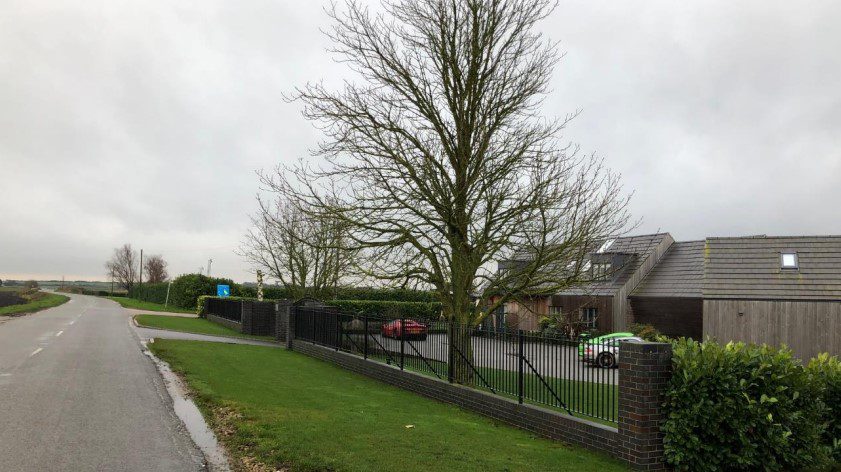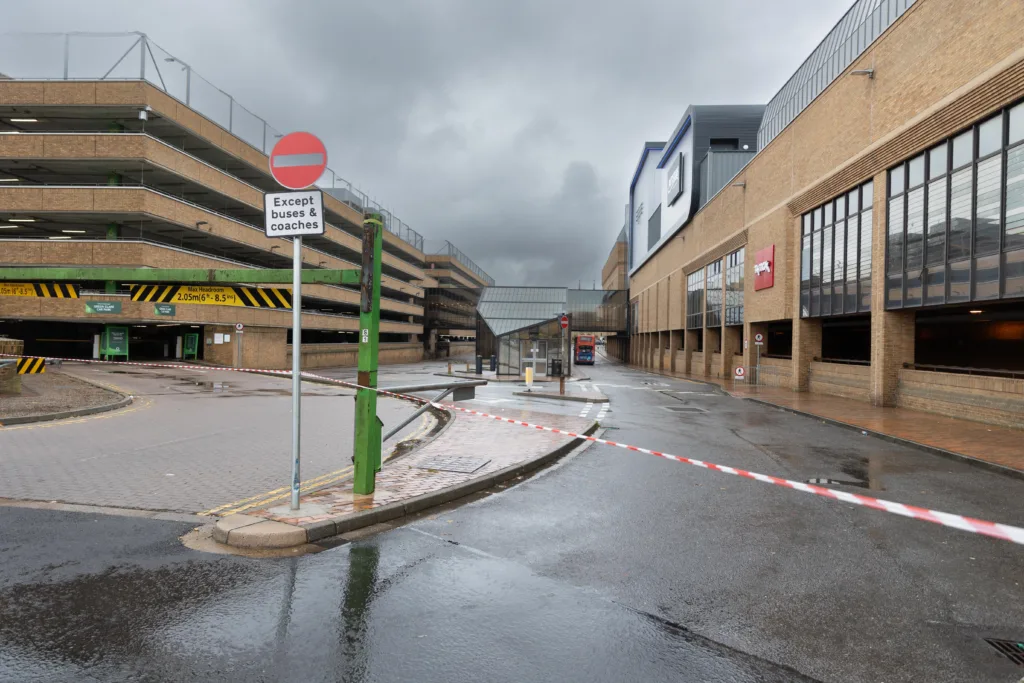
Businessman Ross Taylor is fighting an enforcement action over his garden wall.
It’s not just any old wall, however, as it has “pillars and railings, and gates, which exceed 1 metre in height and are adjacent to a highway used by vehicular traffic”.
And, according to East Cambridgeshire District Council, the boundary wall, access bellmouth and associated gates were undertaken in the public highway for which Cambridgeshire County Council is the local highway authority.
The council says the work at Mount Pleasant Cottages, Main Street, Pymoor, occurred within the last year.
And they claim that encroaching onto the highway it is now permissible.
“The wall, with pillars and railings, and gates, is erected in a different location to the fence that was there previously, so cannot be classed as improved or altered,” says the council.
“As the wall with pillars, railings and gates is clearly more than 1m high, it is necessary to establish whether they are ‘adjacent’ to the highway.
“As there is no definition in statute, what is adjacent to a highway will depend on individual, site-specific circumstances and will be a matter of fact and degree in every case.”
The council is using legal precedents to support its case.
“Since it is not ‘permitted development’ and does not benefit from any other planning permission it constitutes a breach of planning control,” says the council.
“The fallback alternatives utilising the rights under the permitted development provisions, referred to above, have been considered.
“Thus, a wall and gates that does not exceed 2 metres in height above ground level could be erected in a position which would not be adjacent to the highway.
“However, it is considered that the wall and gates as erected are adjacent to the highway and do not benefit from planning permission.
“And, because of their dominance, are clearly more harmful than such a wall and gates would be had they not been adjacent to the highway”
The council says the house is in “open countryside location and it is considered that the walls, railings, gate, and pillars, by virtue of their size, design, height, bulk, and mass appear as an unacceptably dominant and visually intrusive feature in the rural landscape.
“They are harmful to the appearance and character of the surrounding area and countryside and create a visually conspicuous and unsightly development as well as having an adverse effect on the countryside location.”
An enforcement notice served on Mr Taylor says he should
1: Remove the wall, pillars, railings, and gate from the front boundary of the dwelling.
2: Or reduce all parts of the wall, railings, pillars, and gates to a height of no more than 1m above ground level, to make the development comply with the terms of the Town and Country Planning legislation.
3: And he should “permanently remove all constituent materials resulting from the works listed above from the site”.
Mr Taylor’s agent has told the Planning Inspectorate, hearing an appeal, that railings replaced a similar-height wooden post-and-rail fence in the same approximate position that had been there for over a decade.
“There was, as a simple matter of fact, a wooden post and rail fence and gate erected to the frontage of the site, which had been in place for well over a decade,” says the lawyer, enclosing Google Earth photos from 2008 and 2011 to support his contention.
He disputes the council’s claim that the fence is erected in a different position to the fence that was there previously.
“The position therefore is that although the new wall, pillars, railings and gates exceed one metre in height, they are self-evidently in the same location as the fence that was previously there in every material respect, and do not exceed the former height of the means of enclosure prior to its improvement,” says the agent.
County council highways insists the works (boundary wall, access bellmouth and associated gates) were undertaken in the public highway for which the county council is the local highway authority.
“I am unaware of any permission granted for a third party to carry out such works and it is an offence to carry out any works within the public highway without the permission of the highway authority,” an official told the Planning Inspectorate.
“Had CCC been consulted on the scheme, an objection would likely have been raised on the following grounds:
* The gate is insufficiently set back to allow a vehicle to wait off the main carriageway. Gates should be set back a minimum of 5m from the carriageway edge.
* The boundary wall appears to encroach the public highway.
* It is more appropriate for an access to a single dwelling to take the form of a vehicular crossover. The bellmouth (which is not constructed to CCC’s specification) will act as an unnecessary maintenance burden for CCC.
The official added: “As the construction specification of the access in unknown, I cannot comment on its suitability or whether it will have on long term impacts upon highway safety.
“I advise that the owner gain the appropriate planning and highways consents prior to rectifying the works.
“If they are unable to gain such consents, then the access and boundary should be removed, and the prior condition reinstated.”
The appeal was lodged in January and no decision has yet been reached.





















